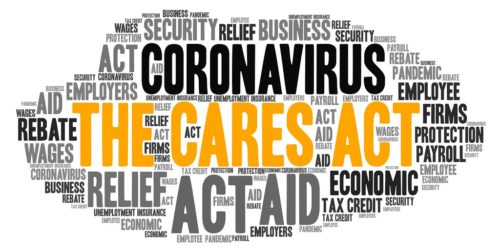Originally published on Forbes.com.
The Paycheck Protection Program is probably the most important economic response to COVID-19 when it comes to small and not so small businesses and the people that work for them. The plan is basically a really sweet working capital loan, that will be mostly forgivable if you jump through the right hoops.
That is a very important way to think about it. Don’t fail to take the money, because you may end up having to pay some of it back. It is a good deal regardless – 0.5% interest, two years, no payments for six months, no personal guaranty, no collateral.
You have to go to a bank for the loan, but Treasury and the Small Business Administration are pushing the banks to be consistent and act quickly. Applications are supposed to start being accepted on April 3. It looks like gig workers and similarly situated people may have to wait till April 10.
The current draft application on the Treasury site and the related fact sheet indicate that the first round of applications will be by businesses that have payroll in the traditional sense.
Many accounting firms have a few equity partners and numerous income partners, who in an economic sense are effectively employees. That situation is not addressed. Also not clearly addressed are payments to gig workers and people in businesses who have no employees.
The haste with which this was put together can be illustrated by this excerpt from the fact sheet:
“Starting April 3, 2020, small businesses and sole proprietorships can apply for and receive loans to cover their payroll and other certain expenses through existing SBA lenders. Starting April 10, 2020, independent contractors and self-employed individuals can apply for and receive loans to cover their payroll and other certain expenses through existing SBA lenders.” (Emphasis added)
If somebody is working for somebody else as an “independent contractor”, they are a “sole proprietor”.
What About Partners?
My friend Jeff Kristoff, Tax Manager of Rosen Associates told me that one of the Rosen partners, Carolyn Carpenter was saying that they have forgotten about partners in a midnight conference call in which the Rosen people were sorting this out for their dentist clients. Carolyn was one of my partners at CCR of blessed memory and a fellow managing director at the not quit Big 4 firm that swallowed us up.
The Act may require a technical correction to address partnerships and limited liability companies that are usually taxed as partnerships or a huge swath of small business will be left out in the cold.
Even If All Is Not Forgiven
There will be a strong drive to have all the loan forgiven. A couple of Reilly’s Laws of Tax Planning apply here even though this is not strictly speaking a tax matter.
Execution isn’t everything, but it is a lot. Open a separate account where you deposit the loan proceeds. Only use the account to pay or possibly reimburse qualified expenses – “payroll costs”, rent, interest and utilities.
Pig get fed. Hogs get slaughtered. Given the speed and scale at which this program is moving, resolving any doubt or lack of clarity in favor of the answer that works best for you is a reasonable thing to do. Just don’t get carried away. Maybe there will be three months rent paid in eight weeks. There should not be twelve. Just an example of how the mind of a cynical bastard works. Don’t forget this part of the fact sheet.
“Do I need to personally guarantee this loan? No. There is no personal guarantee requirement. ***However,
if the proceeds are used for fraudulent purposes, the U.S. government will pursue criminal charges against you
***”
You and I both know that they will only prosecute a small percentage of the fraudsters, but really you don’t want to start your life of crime with this program.
Pretty Clear For Corporations
If your entity is a corporation, you should be ready to rock an roll. You are going to need signatures from anybody who is more than a 20% owner which may be a practical problem. You should be able to compute the basic payroll number from your 2019 W-2s (Count the over $100k people as $100k) with benefits added on. Then divide by 12. (The form then asks you to multiply by 2.5)
The question that says “Jobs” is a little troubling. Forgiveness can be carved back if there is a reduction in the number of full-time employees. It would seem that the “Jobs” question is meant to be the denominator of the fraction that will be used. So you want that number to be as low as possible, but I did not see any explicit instruction. How do you count part-time employees?
For sole proprietorships, we have included in payroll costs:
For a sole proprietor or independent contractor: wages, commissions, income, or net earnings from self-employment, capped at $100,000 on an annualized basis for each employee. (Emphasis added)
An interpretation of that might be that you throw in the number from Form SE (which will be similar to Schedule C) as if it were an extra W-2, but your guess is as good as mine. Ask your banker.
Stealth Move In Fight For 15?
When the bill was going through, there was some complaint by Republican senators that the unemployment enhancement was too rich. Well you can take the kid out of Fairview, NJ and make him a CPA, but at least in my case he won’t shed his working-class attitudes, so my gut reaction to that notion would violate contributor guidelines.
I haven’t studied the unemployment piece but what seems to be talked of is $600 a week. So those Senators might have had a point. If you laid people off and generally treat them shabbily it is hard to see why they will want to work for you if you are not paying them more than $15 per hour. Just saying.































































































